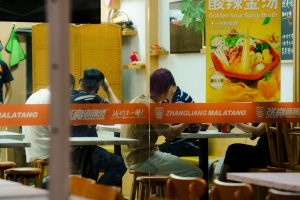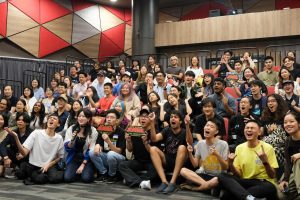Let’s talk about ostracised groups. For the sake of argument, let’s go with migrant workers.
You’d probably say you know what a difficult life they have, but what is more likely is that you will probably never really understand how difficult it actually is.
Imagine seeing someone hurting from an ailment. We register their pain and can process, intellectually at least, that they are suffering. But it would not be the same to say that we can feel that pain or truly empathise with them until we have once suffered that same ailment. To understand their pain would demand that we actually be in their situation, experiencing their turmoil.
It is precisely this awareness of our lack of understanding that draws me to film: Film renders the invisible visible.
I’m not claiming that film is the best artistic medium out there. But Film is unique in how visual it is. If we were to read a novel about someone’s suffering, we could possibly enter their psychological and mental space, grasping, through those dimensions, the person’s experience. On the other hand, Film transports us into a person’s first-hand experience by using the physical to suggest the unseen: the emotional and psychological sentiments.
The Chinese phrase for cinema is 摄影, which translates literally to ‘shooting shadows’. On a superficial level, it demonstrates how Film plays with shadows and light to create moving images. But if we were to consider this metaphorically, Film captures both the visible (the light) and the invisible (the shadow)—or rather, the less visible.
Just like film, there are many who exist in the shadows of society. Danger exists when these underprivileged and marginalised groups are perceived with cookie-cutter and stereotypical perceptions, without understanding of the complexities of their experiences.
Perception is especially important in how these groups are portrayed in the media, which speaks to a mass audience about the lives of these people.
Take for example the CPF Board advertisement that presented an oblivious young person disrupting a bus occupied by many elderly individuals:
But does old age give rise only to fear and disgruntlement? The ways marginalised groups are presented in media reveal the many prejudices that persist in our society, therefore revealing just how little we understand them.
There leaves so much to be understood and felt. That’s the opportunity Film provides.
Local director Lei Yuan Bin (director of Fundamentally Happy and A Dance for Ren Hang)’s newest film, I Dream of Singapore, contains fly-on-the-wall long takes of migrant workers in everyday mundane acts: walking around Singapore, praying, and hanging out with friends. There’s something unnerving about these long takes. They demand your attention. It’s as though they draw you into the frame, daring you to imagine yourself in that same situation.
As an audience member, this approach to cinematography offers me a unique perspective: to look and to realise that there is a lot I am clueless about. Because Lei gives no context to the situation, I become conscious of a simple fact: I understand nothing. All I can do is to glimpse and attempt to imagine.

Documentaries, in their attempts to look at what we do not often see, allow us to look at situations a little more clearly.
Take as another example the documentary Midnight Traveler, about an Afghan family of four who escaped from the Taliban to Tajikistan, only to have their asylum applications abroad rejected. Helpless, they take the notorious route through Turkey into Europe.
At this point in the refugee crisis, we’re already all too familiar with the devastating stories and images of helpless asylum seekers escaping to Europe, contributing to a general desensitisation towards these situations.
But I would also argue that it is precisely because we only hear and read of archetypal narratives about these refugees that we grow desensitised. It is difficult to imagine just how similar we are to these refugees—middle-class, educated, and career-driven. So, instead, we fall victim to the easier, less empathetic route of picturing them as war-torn victims, escaping from a life of poverty and suffering.
If we can experience just an individual’s story, would we still be as unaffected as we are?
No matter migrant workers or refugees, the truth is that we will never completely understand how another person experiences life. But the point is not to resign ourselves to apathy. Instead, we have to start by recognising how our own knowledge is never enough. Reality is usually much more complicated and nuanced than we imagine. So in reaching out to know, a chance for genuine understanding is created.
And what better artistic medium for us to question our worldviews than Film? Film powerfully subverts our notions of others when it holds us hostage for a fixed amount of time, forcing us to look at and to consider another’s perspectives.
Does this experience, then, not enable us to interrogate our own perceptions as well? Film, unlike words, seeks not to persuade but often to simply present, asking you to suspend your ignorance and judgment to immerse yourself in something unfamiliar. When the movie ends and the credits roll, if the filmmakers have done a good job, your perception of others’ and even your own reality would no doubt have been transformed, even if just a little.
When Film shines a light on what is foreign to us, we not only try to look a little closer at another’s life, but also at ourselves and how little we actually know. If what we fear is not darkness but what is in the darkness, then the lights and shadows of Film can enlighten us, as long as we accept the limitations of our understanding.
All Rice readers enjoy S$2 off the opening film and S$1 off all other titles with the promo code SGIFFxRICE.
Update: The SGIFF screening for ‘I Dream of Singapore’ has sold out, but there will be a special charity screening in aid of TWC2. More information can be found here.






